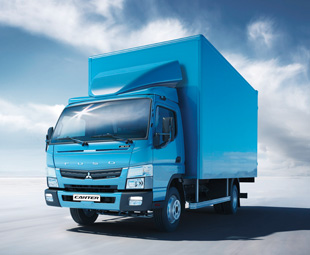Mediums getting along well

The medium commercial vehicle (MCV) segment has held its own so far this year, returning growth numbers in the first quarter. FOCUS explores the reasons for this performance and assesses the segment’s prospects for the rest of 2017
Variety is the name of the game in the MCV segment, with an array of small trucks and large vans often competing for a similar audience. This melting pot of medium-weight magic is, however, not without its ups and downs.
According to Jaco Steenekamp, general manager: sales and marketing, Volkswagen South Africa (VWSA) Commercial Vehicles, the overall MCV market showed a decline of 19 percent in 2016, over 2015, making it the segment with the biggest deterioration last year.
Speaking from a van perspective, Steenekamp says: “The large-van segment of the MCV market showed the biggest decline, being 27 percent smaller than in 2015. One reason for this was difficulty in getting operating permits for 22-seater taxis.”
Quarter one of 2017, however, saw the segment make a recovery, before taking a dive again in April (along with the rest of the new-vehicle market).
Martin Liebenberg, head of sales at Iveco South Africa, agrees: “We expected a normal decrease in April with all the public holidays, however, some of it is economically driven and there was a bigger decrease than usual.”
Harry Makitla, product manager: Fuso Trucks Southern Africa, adds: “One of the factors is our volatile political environment. There were a number of protests and this negatively affected market strength. When South Africa was downgraded to junk status our credit rating took a knock, which meant that fewer customers were likely to invest in new trucks.”
It seems politics and economics will be the biggest influencers on the market this year. “We predicted a flat market at the beginning of the year,” says Liebenberg. “There may be a short-term decline, depending on what happens politically – we’ve seen some impact from that already. Amazingly, the rand has kept some strength, so it’s not terrible at the moment.”
Makitla reports that the market may stabilise in the short to medium term. “As far as we can forecast, we see the market stabilising, which means there is potential for growth. As it was with quarter one, our economy is stabilising somewhat – albeit very slowly. We are confident that there will be some quarters where truck sales increase again,” he says.
It seems customers are also latching onto the relative stability … though not without some exceptions; such as in the 22-seater taxi market. In addition to the difficulty in getting operating permits, as noted by Steenekamp, Liebenberg adds that obtaining finance is currently also not easy.
“Banks are risk-averse at the moment. For example, deposits required on taxis are now reaching
20 percent of the purchase price and a lot of clients just don’t have the funds. There is also a cash-flow implication for their businesses. We need to find different ways of putting vehicles on the road,” he explains.
Attitudes among large-van buyers seem to be a bit more positive, though. Steenekamp says the VW Crafter increased its segment share from 28 percent in 2015 to 30 percent in 2016. Liebenberg suggests that the Daily also saw an increase in sales, but the company is not resting on its laurels.
“We are watching the rand/euro exchange carefully, because that has quite a big impact on our sales – but there is more growth potential in the market,” he reiterates.
Makitla suggests that Fuso experienced growth in both 2016 and the first quarter of 2017. He says, however, that truck buyers are closely monitoring market activity in the wake of uncertainty.
“They are holding onto their current vehicles for as long as possible. We are seeing that even customers who should replace their vehicles are being cautious and are rather taking a ‘wait-and-see’ approach,” he says.
If there’s one thing that is definitely unlikely to change, though, it would be customers’ priorities. “Quality and reliability of products, value for money and best service support are key,” says Makitla. “We also know that customers are learning that there is so much more to owning a truck than just the purchase price. They are realising that it is about total cost of ownership.”
Steenekamp suggests that an aspect of the Crafter’s growth during 2016 was the new standard service plan that VW introduced during the year. “Almost without exception, all customers in the large-van segment demand reliability and quality first and foremost, then a competitive cost of ownership, and then practicality and performance,” he says.
Liebenberg concurs. “Speed is of the essence. For example, clients want to drop a vehicle for a service at short notice, so we have to accommodate them. Parts availability is also critical, as are running costs, which is what everyone watches in this segment. Many clients are even beginning to look at buybacks.
“More and more buyers also want comfort features such as speed control, air-conditioning and a radio; this plays a big role in this segment,” he adds.
It also adds to the competitiveness between some very different types of vehicles in the melting pot that is the MCV segment…
Published by
Focus on Transport
focusmagsa



